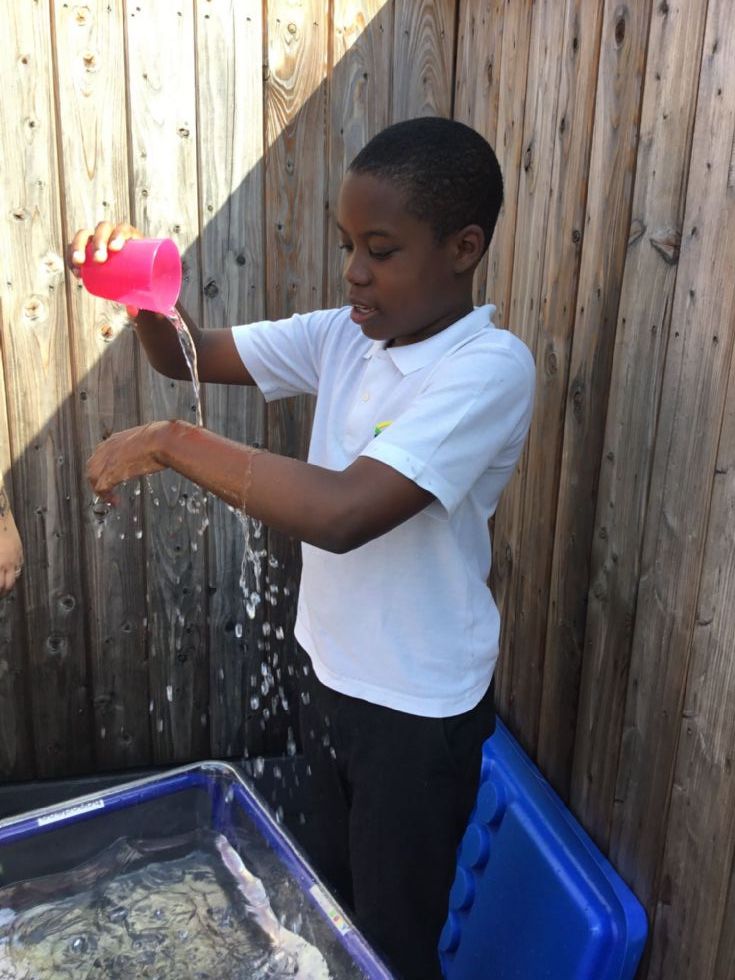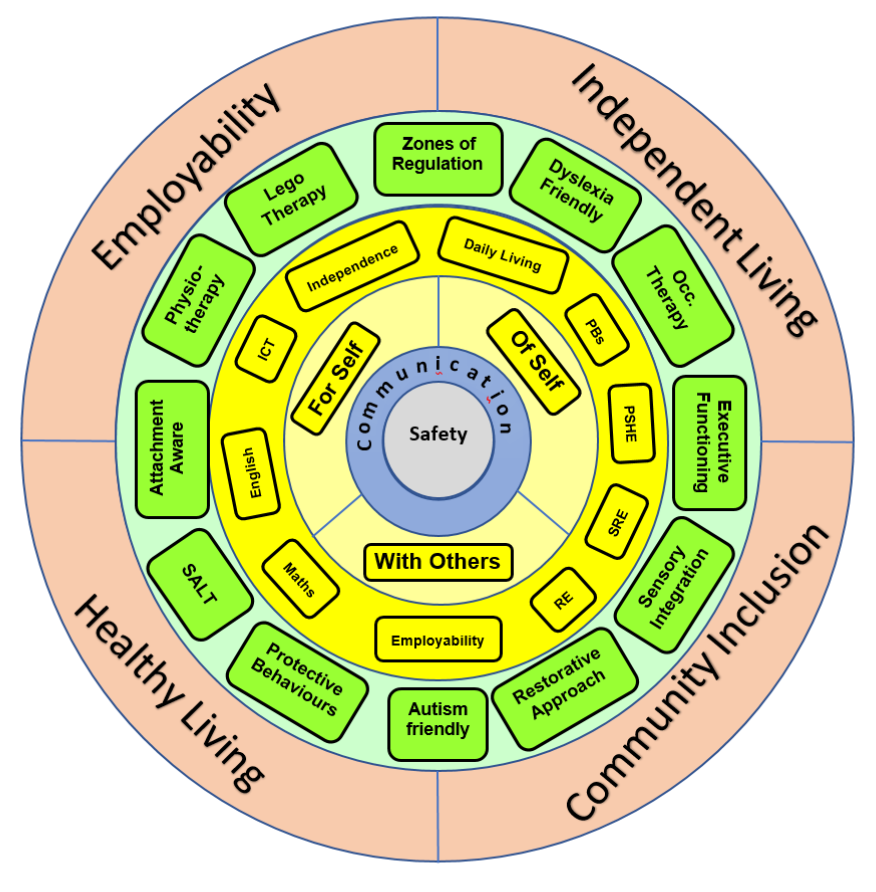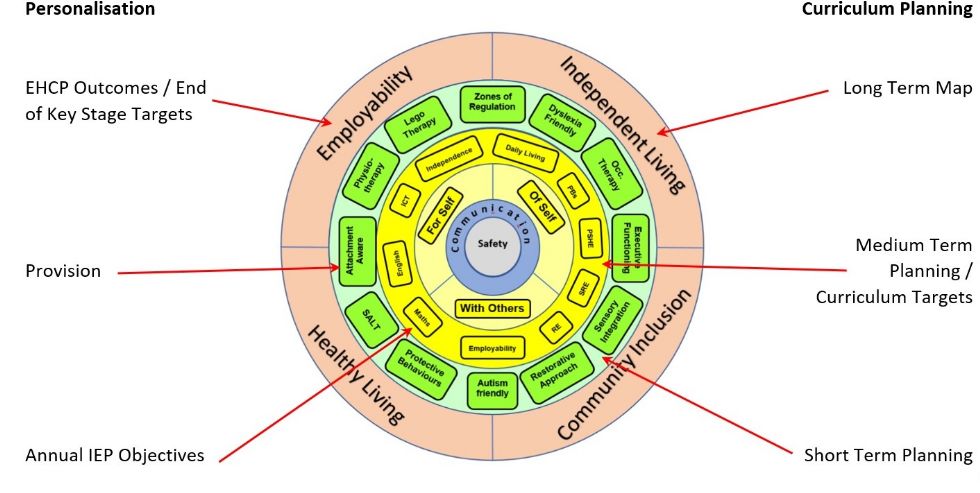Delivery Model & Personalisation

Across our trust, we utilise all available resources to ensure our students are able to learn.
We are committed to personalising the education of each of our students as much as possible, so that they learn the most relevant things as effectively as they can.

To provide our pupils and students with the skills to live as independently as possibly in an ever-changing world, to be:
- Successful Learners
- Confident Individuals
- Responsible Citizens
To be successful, our children need to feel safe and build trusting relationships. Only when we enable this will our children be able to engage in learning activities and develop the skills necessary.
Our curriculum is based around 3 themes of safety:
- Of self — the ability to self-regulate and manage your own emotions and so engage in learning experiences
- For self — the ability to be independent and autonomous (do things not only by yourself but for yourself)
- With others — the ability to manage and develop positive relationships
These 3 themes ultimately lead to the 4 outcomes for Preparation for Adulthood:
- Employment
- Independent Living
- Community Inclusion
- Health
Our students have faced, and do face, numerous obstacles to learning, and it is our role as educators to put in place whatever strategies are necessary to remove all barriers to learning. Across our trust, we will utilise all available resources to ensure our students are available to learn.

The purpose of assessment within our schools is to celebrate success and identify next steps for further development.
Assessment is an ongoing activity and as such should be active — Assessment for Learning and Assessment of Learning, as much as is practically possible, should occur alongside students. Students should be engaged in celebrating success and identifying their next steps for learning.
EHCP outcomes (long term objectives) will be identified through the annual review process when reviewing their EHCP. We will use ‘PfA Outcomes across the age ranges for children and young people with SEND’.
Annual IEP objectives (yearly curriculum targets) will be identified during the annual review. We will use ‘Skills Builder SEND’ to identify steps to success to meet outcomes identified in the EHCP.
Assessment of Learning will be by using MAPP and captured within Evidence for Learning, quantifying success:
INDEPENDENCELearners complete tasks independently.
Can they do it on their own?
FLUENCYLearners reach a level of mastery combining speed and accuracy.
Are they getting better at it?
MAINTENANCELearners maintain competency over time through repetition. They remember after a break.
Can they do it more often? Are they more reliable?
GENERALISATIONLearners achieve mastery in different settings or contexts, with different stimuli or with different staff?
Can they do it with different people or in different places?
